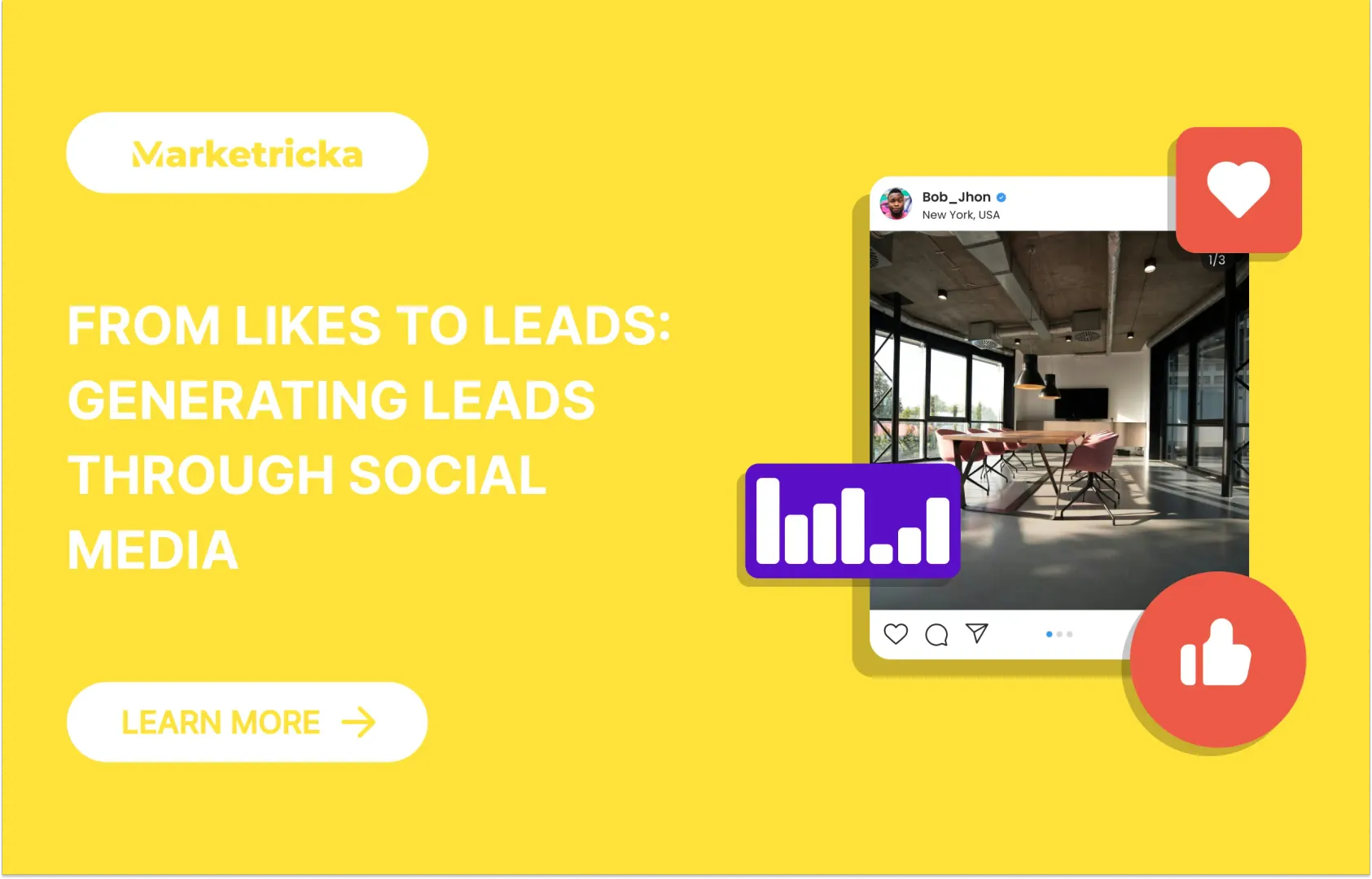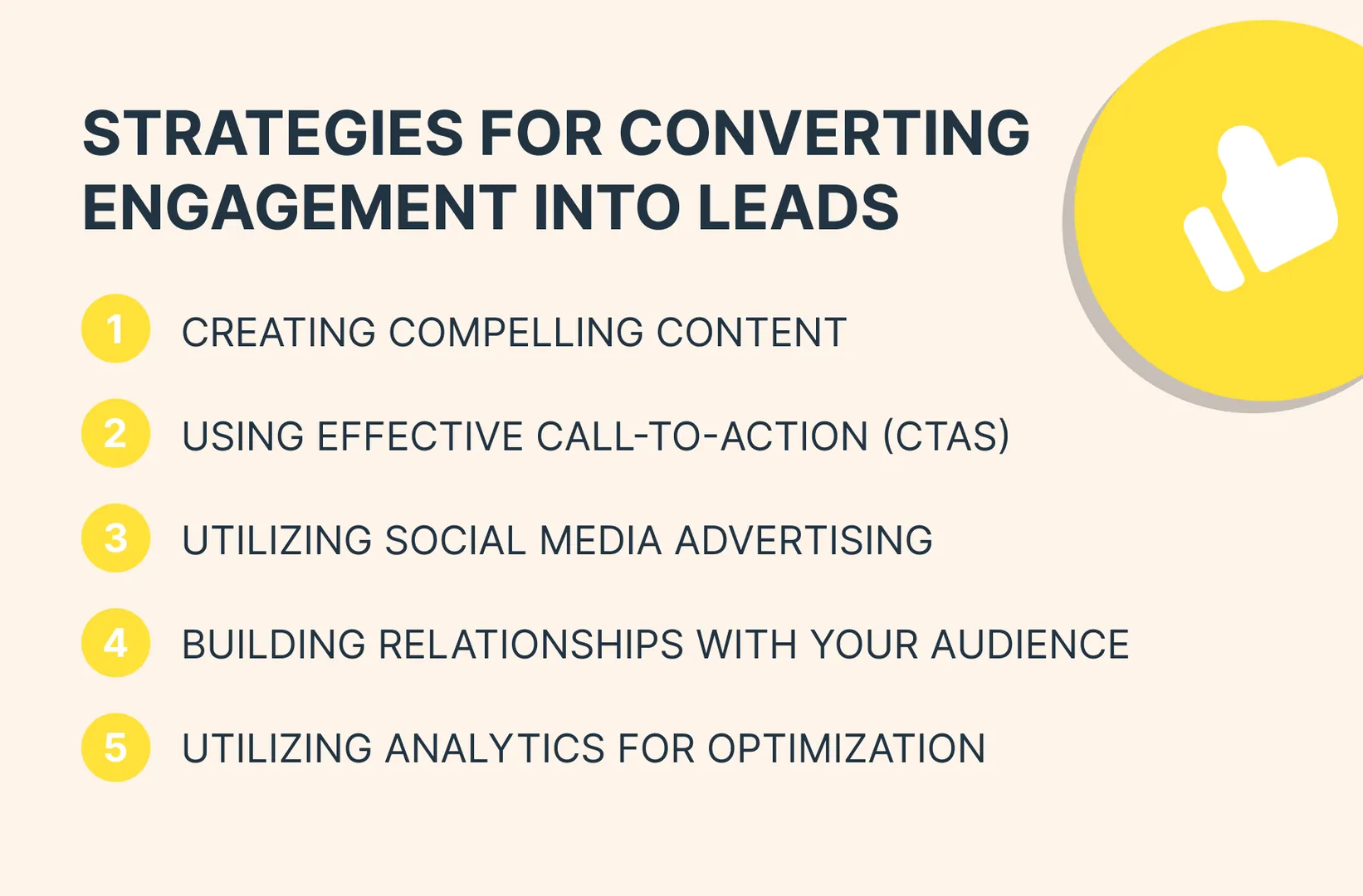From Likes to Leads: Generating Leads Through Social Media
Learn how to turn social media engagement into valuable leads. Master strategies for generating leads through social media and optimize your lead generation efforts.

Summary :
In the fast-evolving world of digital marketing, social media has emerged as a powerhouse for brand exposure and customer engagement. As social media platforms continue to grow—Statista projects nearly six billion users by 2027—leveraging these channels effectively is crucial for businesses aiming to convert engagement into measurable outcomes. While attracting likes, shares, and follows is a significant achievement, the real challenge lies in converting this engagement into actionable business results and generating leads through social media.
To turn social media interaction into meaningful customer conversions, it is essential to move beyond basic metrics and focus on strategic goals. By setting SMART (Specific, Measurable, Achievable, Relevant, and Time-bound) objectives, businesses can effectively channel their social media efforts into generating leads and driving sales. This approach not only enhances the efficiency of marketing campaigns but also ensures that engagement translates into real, measurable business outcomes, making lead generation on social media more impactful and successful.
Why Social Media Matters?
Social media isn’t just a tool—it’s the heartbeat of modern connection. Imagine staying close to friends and family, no matter where they are, or building new relationships that inspire and uplift you. That’s the power of social media. It’s also where businesses and individuals share their stories, ideas, and passions, reaching audiences they never thought possible. For brands, it’s the stage where they shine, showcasing products and connecting with customers in a way that feels personal and authentic.
But social media doesn’t stop there. It’s a marketing powerhouse, offering businesses the chance to target specific audiences, generate leads, and drive sales with precision. Through social media lead generation, you can increase engagement and attract potential customers effectively. Beyond its marketing prowess, social media is a treasure trove of knowledge and inspiration, helping you learn, grow, and stay ahead of trends. It also serves as a platform for advocacy, allowing you to raise your voice, champion causes you care about, and make a real impact in the world.
So, why does social media matter? Because it connects us, drives change, generates leads, and empowers us to share our stories with the world. Start exploring the endless possibilities it has to offer.
Key Social Media Metrics: Important Metrics Beyond Likes
When it comes to social media success, it’s easy to get caught up in the number of likes, but there’s so much more to consider. To truly understand your performance and make informed decisions, tracking a broader set of metrics is crucial. Here are some key social media metrics that go beyond likes and are essential for effective lead generation on social media:

Engagement Rate
This measurement shows how actively your audience interacts with your content through likes, shares, comments, and clicks. A high engagement rate indicates that your content resonates with your audience.
Reach
Reach tells you how many unique users have seen your content. It’s a critical measurement for understanding your content’s visibility and how well your posts are spreading across social media.
Impressions
While reach shows how many people saw your content, impressions indicate how many times your content was displayed. Tracking impressions helps you assess the frequency with which your content is being shown.
Follower Growth
Monitoring the growth or decline of your followers over time gives you insight into your brand’s popularity and the effectiveness of your content strategy.
Click-Through Rate
CTR measures the percentage of people who clicked on a link in your post or ad out of the total who saw it. It’s a vital measurement for evaluating the effectiveness of your calls to action.
Conversion Rate
This measurement shows the percentage of users who took a desired action (like signing up or purchasing) after interacting with your social media content. It’s crucial for measuring the direct impact of your efforts.
Bounce Rate
This tells you the percentage of users who clicked on your social media link but left the page without taking any further action. A high bounce rate might indicate that your content isn’t meeting user expectations.
Sentiment Analysis
Beyond just numbers, sentiment analysis gauges the emotions or opinions expressed in comments, mentions, and messages related to your brand. It helps you understand how your audience feels about your content.
Video Views and Completion Rate
If you’re using video content, tracking how many people watched your video and how many watched it to the end is essential for evaluating its effectiveness.
Lead Generation
This measurement tracks the number of potential customers generated through social media interactions. It’s a direct indicator of your social media’s impact on lead generation and how effectively your efforts are feeding into your sales pipeline.
Return on Investment (ROI)
Finally, ROI measures the financial return from your social media efforts relative to the cost invested. It’s the ultimate measurement to determine the effectiveness of your strategy.
Setting SMART Social Media Goals
When setting social media goals, it’s crucial to follow a structured approach to ensure they are effective and achievable. By applying the SMART criteria—Specific, Measurable, Achievable, Relevant, and Time-bound—you can create clear and actionable goals for your social media strategy. For instance, setting goals for social media lead generation might involve specifying the number of leads you aim to generate, measuring success through metrics like conversion rates, ensuring your targets are realistic, aligning them with your overall marketing objectives, and setting a timeline for achieving them. Here’s a breakdown of how to set SMART social media goals:
1) Defining Specific Objectives
To set effective social media goals, start by making your objectives clear and specific. Instead of setting a general goal like “increase engagement,” pick a specific target, such as “raise the number of post likes by 20% over the next three months.” Specific goals like this give you a clear plan and make it easier to see what you need to do to reach your target.
2) Measuring and Tracking Progress
Once you’ve set your goals, figure out how you’ll track your progress. Use analytics tools to monitor important metrics like how much people interact with your posts, how your follower count is growing, and how much traffic your website is getting. Check these numbers regularly to see if you’re on track and make changes to your strategy if needed.
3) Establishing Time-Bound Targets
Set deadlines for your goals to keep yourself on track. For example, say you want to “increase website traffic from social media by 15% in the next six months.” Having a set deadline helps you stay motivated and gives you a clear timeframe to check your progress and make any necessary changes.
Strategies for Converting Engagement into Leads
To turn social media interactions into valuable leads, you need a clear strategy. Start by creating engaging content that captures attention and use strong calls-to-action (CTAs) to encourage actions. Run targeted social media ads to reach the right people, and build strong relationships with your audience by staying active and responsive. Lastly, use data to adjust and improve your approach. Each of these steps is essential for generating leads through social media and turning interest into real opportunities for your business.

1) Creating Compelling Content
To turn social media engagement into valuable leads, start by creating content that truly connects with your audience. Share informative articles, engaging videos, and eye-catching visuals that address their needs and concerns. Make sure your content answers their questions and provides solutions. Great content doesn’t just attract attention; it also motivates users to take action, like signing up for your newsletter, downloading a resource, or reaching out to you directly.
2) Using Effective Call-To-Action (CTAs)
A strong call-to-action (CTA) is essential for turning engagement into leads. Every piece of content should have a clear and compelling CTA that tells users exactly what to do next. Whether it’s “Download Now,” “Sign Up for Free,” or “Learn More,” your CTA needs to be direct and relevant to your content. Use action-oriented words and create a sense of urgency to prompt users to act quickly. Experiment with different CTAs and placements to find out what resonates best with your audience.
3) Utilizing Social Media Advertising
Social media ads are a great way to turn engagement into leads and boost your lead generation efforts. Use targeted ads to reach the right audience based on their interests, behaviors, and location. Platforms like Facebook, Instagram, and LinkedIn offer detailed targeting options to help you connect with people most likely to be interested in what you offer. Make sure your ads clearly communicate the value of your product or service and include strong calls-to-action to motivate users to take action. Additionally, retargeting ads can re-engage users who have shown interest but haven’t yet converted, helping to improve your lead generation results.
4) Building Relationships With Your Audience
Engaging with your audience goes beyond just responding to comments and messages. Build deeper relationships by participating in conversations, offering personalized responses, and providing valuable insights. Host live Q&A sessions, webinars, or virtual events to interact directly with your audience. By developing these relationships, you increase trust and loyalty, making users more likely to convert into leads. Regularly check in with your audience to maintain engagement and address their evolving needs.
5) Utilizing Analytics for Optimization
Analytics play a crucial role in optimizing your strategies for lead conversion. Track key metrics like click-through rates, conversion rates, and engagement levels to understand what’s working and what’s not. Use tools like Google Analytics and social media insights to gather data on user behavior and campaign performance. Analyze this data to refine your content, adjust your CTAs, and improve your ad targeting. Continuous monitoring and optimization help ensure that your efforts are effectively converting engagement into valuable leads.
Conclusion
In conclusion, turning social media interactions into real business results is both a skill and a strategy. By joining conversations, providing personalized responses, and sharing useful information, businesses can forge stronger connections with their audience. Hosting live events and regularly checking in with followers help build trust and loyalty. The key to generating leads through social media is focusing on these genuine and meaningful interactions. By doing so, you’ll transform casual engagement into potential customers and drive long-term success for your business. Engage authentically, and watch your social media efforts evolve into real opportunities for growth and generating leads.